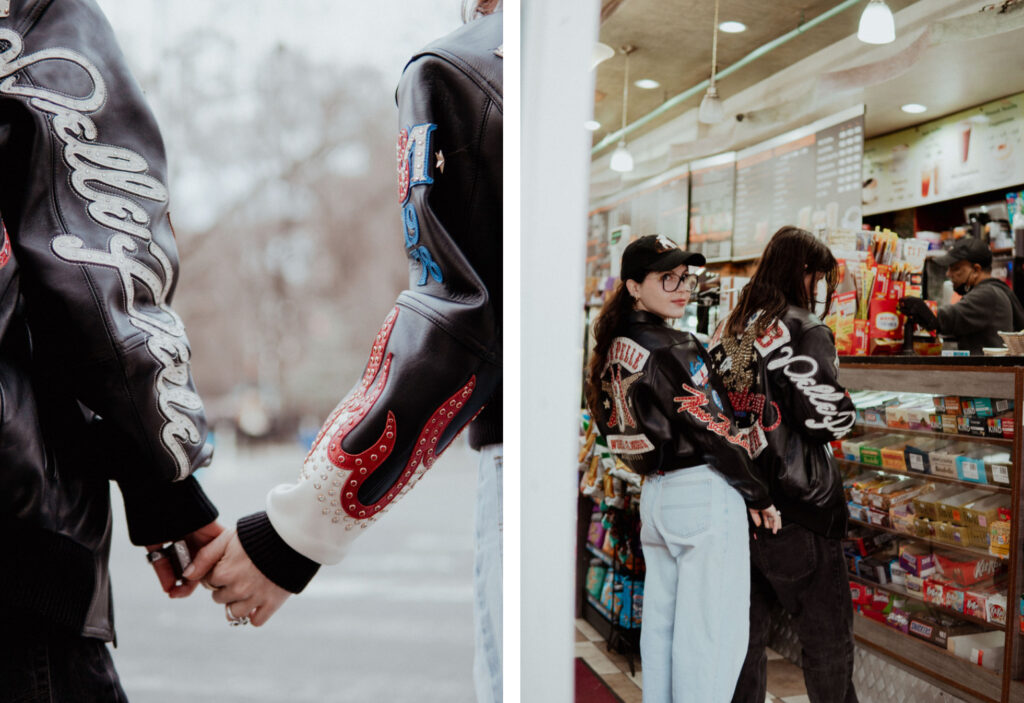In a cultural landscape defined by fast content, short attention spans, and the algorithmic flattening of voice, the idea that a love story could blossom in the heart of New York City’s indie print scene feels both retro and revolutionary. Yet this is precisely what’s unfolding between Ripley Soprano and Penelope Dario—two of the most compelling editorial minds in contemporary print culture. As editors-in-chief of Dirty Magazine and Petit Mort, respectively, their creative and personal partnership fuses two distinct editorial ideologies: one steeped in underground documentation and brash urban candor, the other immersed in sex work advocacy, artful intimacy, and countercultural historiography.
While their romance may form the softcore headline, the deeper truth is that both figures are emblematic of a new publishing movement—one that turns away from corporate gloss and toward community-rooted publishing, radical first-person narrative, and cultural reclamation.
Together, they are writing not just love letters to each other, but to print itself.
From Glossy Obsolescence to Micro-Editorial Revival
To understand the significance of Soprano and Dario’s work, one must first understand the precarious ecosystem of indie magazines in 2025. In the post-Tumblr, post-print, post-pandemic era, the idea of launching a new magazine in New York City seems either delusional or defiantly punk. Legacy titles have largely folded, shifted to digital, or become expensive coffee-table relics with reduced cultural reach. What Dirty and Petit Mort offer is not nostalgia for the golden age of magazines, but a reinvention of what the medium can be when it’s allowed to speak from the margins.
Soprano’s Dirty inherits the lineage of Vice at its wildest and Purple at its most disaffected, but swaps sensationalism for emotional fidelity. It’s a magazine about subculture made by the people living inside those subcultures—not gawking at them. Each issue is a tactile object, defined by distinctive visual codes, editorial typography, and writing that swings between dirty realism and lyrical reverie. It is intentionally lo-fi, high-concept, and unmistakably New York.
In contrast, Dario’s Petit Mort merges eroticism with cultural archiving. The French title—translating loosely to “the little death,” a euphemism for orgasm—signals its blend of intimacy and decay. But Petit Mort is not titillating for its own sake; it is elegiac, erotic, and political all at once. Its primary aim is to platform sex workers as cultural figures—not merely subjects of reportage. It resists extraction and insists on preservation. Each issue becomes a reliquary of lived experience, an altar to the overlooked.
Editors-in-Chief as Architects of Subjectivity
The power of both publications lies in how they’re edited—not from a remove, but from within. Soprano and Dario do not observe culture, they embody it. The editorial process for both isn’t about commissioning sanitized copy or hiring freelancers to file from afar—it’s about building trust with contributors who often haven’t written for publication before, many of whom live the very experiences being documented.
In Dirty, this manifests as dispatches from warehouse parties, essays on queer nightlife economics, reports from basement gigs in Ridgewood, and visual diaries from skate crews and fashion collectives. Each contributor writes from the inside, often photographing themselves or friends. This authenticity isn’t a branding device—it’s the editorial principle.
Petit Mort employs a similar ethos, especially in its documentation of sex work and body labor. Dario ensures that sex workers write about sex work—not filtered through a voyeuristic or “concerned citizen” lens. The result is writing that’s raw but refined, fearless but delicate. There’s no shock value for its own sake, no push for trauma porn. If Dirty is a city at 3 a.m., Petit Mort is a boudoir at 3 p.m.—sunlight filtering through lace curtains, lighting up the subtext of a shadowed profession.
What unites these approaches is a shared commitment to first-person editorialism. Both magazines disavow traditional objectivity in favor of lived narrative, something increasingly crucial in a media landscape that commodifies identity without centering experience.
Print as Object, Print as Fetish
Both Soprano and Dario treat print as sacred—down to the paper stock, layout, and binding. In an age where Instagram carousel posts often replace zines, these editors insist that print still holds radical potential. Not as nostalgia, but as fetish object. Something to be touched, saved, shared, shelved.
Dirty issues are packed with collage, marginalia, faux-handwritten notes, and layout disruptions. It rejects the minimalist, i-D imitation house style in favor of maximalist imperfection. Mistakes are preserved. Layouts echo DIY punk zines while integrating fashion editorials and cultural essays that are more Joan Didion than Dazed.
Petit Mort, by contrast, adopts a visual and material language that is softer—yet no less intentional. Its layouts are often painterly, drawing from historical erotic publications, art books, and early 2000s fashion glossies. Each issue becomes a curated space of sanctuary for its contributors, adorned with fine photography, intimate prose, and tender, anonymous reflections.
There is something sacred about this kind of print—a material resistance to digital ephemerality. For Soprano and Dario, the magazine isn’t merely a product; it’s a performance, a relationship, a provocation, and a keepsake.
The Romance of Radical Editorialism
Their romantic relationship cannot be separated from this shared editorial instinct. Rather than being rivals, they serve as mutual critics, collaborators, and confidantes. In many ways, their love mirrors the values embedded in their work: intimacy without domination, collaboration without compromise, voyeurism made mutual.
Where so many creative couples obscure their professional identities under a shared umbrella, Ripley and Penelope have doubled down on distinct voices, distinct platforms—and a shared aesthetic vocabulary that pulses through both. Their magazines are not clones of one another, but speak in dialects of the same resistance.
What emerges is a kind of editorial duality. Dirty captures the performance of being young and reckless in a city that swallows you whole. Petit Mort asks what happens after the performance—when the glitter falls off, the rent’s late, and the only power you have is the ability to tell your own story before someone else does.
Future Forms: Publishing as Production, Performance, and Power
If the 2020s have taught us anything, it’s that traditional publishing is no longer viable as a standalone model. Both Soprano and Dario understand this implicitly. Their projects are mutating. Dirty is exploring multimedia collaborations with underground filmmakers and micro-grant schemes for new photographers. Petit Mort is forming a production company that can turn its editorial principles into cinema, gallery exhibitions, and performance art.
The expansion is strategic but also symbolic. It represents a refusal to let these ideas exist solely in print. The magazine becomes a node, not a nucleus—one medium in a constellation of formats that reflect a lived ideology.
Crucially, this model resists the monoculture of social media, which flattens all aesthetics into trends. Instead, Dirty and Petit Mort assert taste. They cultivate editorial voice not by appealing to everyone, but by finding their people and holding them close.
VII. Conclusion: Intimacy as Editorial Praxis
The love story between Ripley Soprano and Penelope Dario is not remarkable because two editors fell for each other. It’s remarkable because their relationship reflects a rare synthesis of editorial, personal, and political integrity. In a city that churns through culture and forgets its artists, they’ve built sanctuaries—on paper, on page, on each other’s lips.
Their magazines don’t exist in opposition to mainstream media. They exist in a completely different language—one where desire, marginality, and autonomy aren’t exotic subjects but the starting point for new mythologies.
Dirty and Petit Mort are not just publications. They are love letters to experience, to each other, and to the stubborn belief that print can still mean something.
Focus Keyphrase: Dirty Magazine and Petit Mort
4 Synonyms: independent magazines, radical print culture, New York indie publishing, contemporary editorial vision
120-character description: A love story in ink: how Dirty and Petit Mort are reimagining print media through intimacy, radicalism, and romance
Alt text: Editorial photo of Ripley Soprano and Penelope Dario in studio setting with magazines, prints, and type layout samples
Breadcrumb Title: Ripley Soprano & Penelope Dario Reimagine Indie Print Culture
No comments yet.








